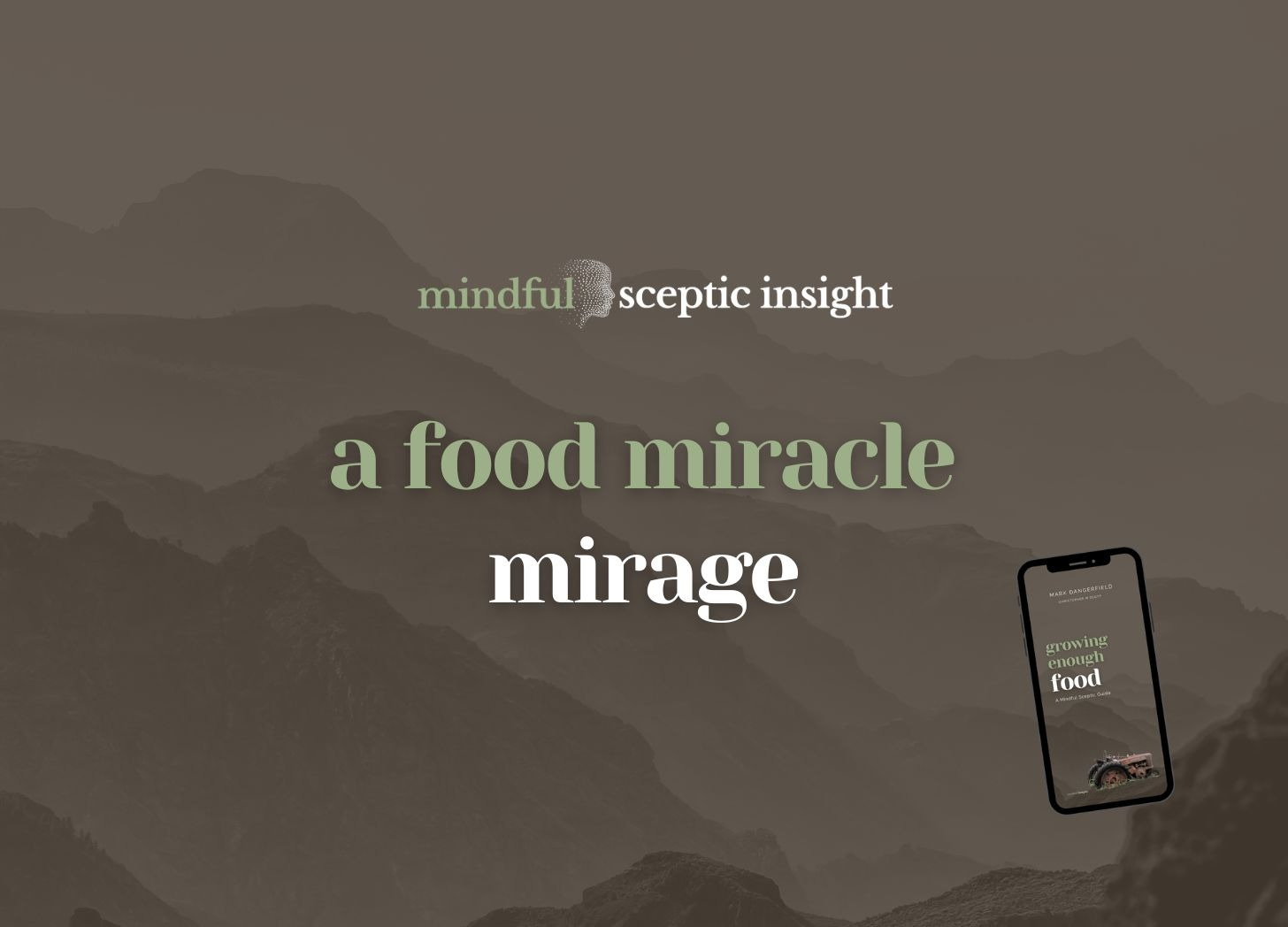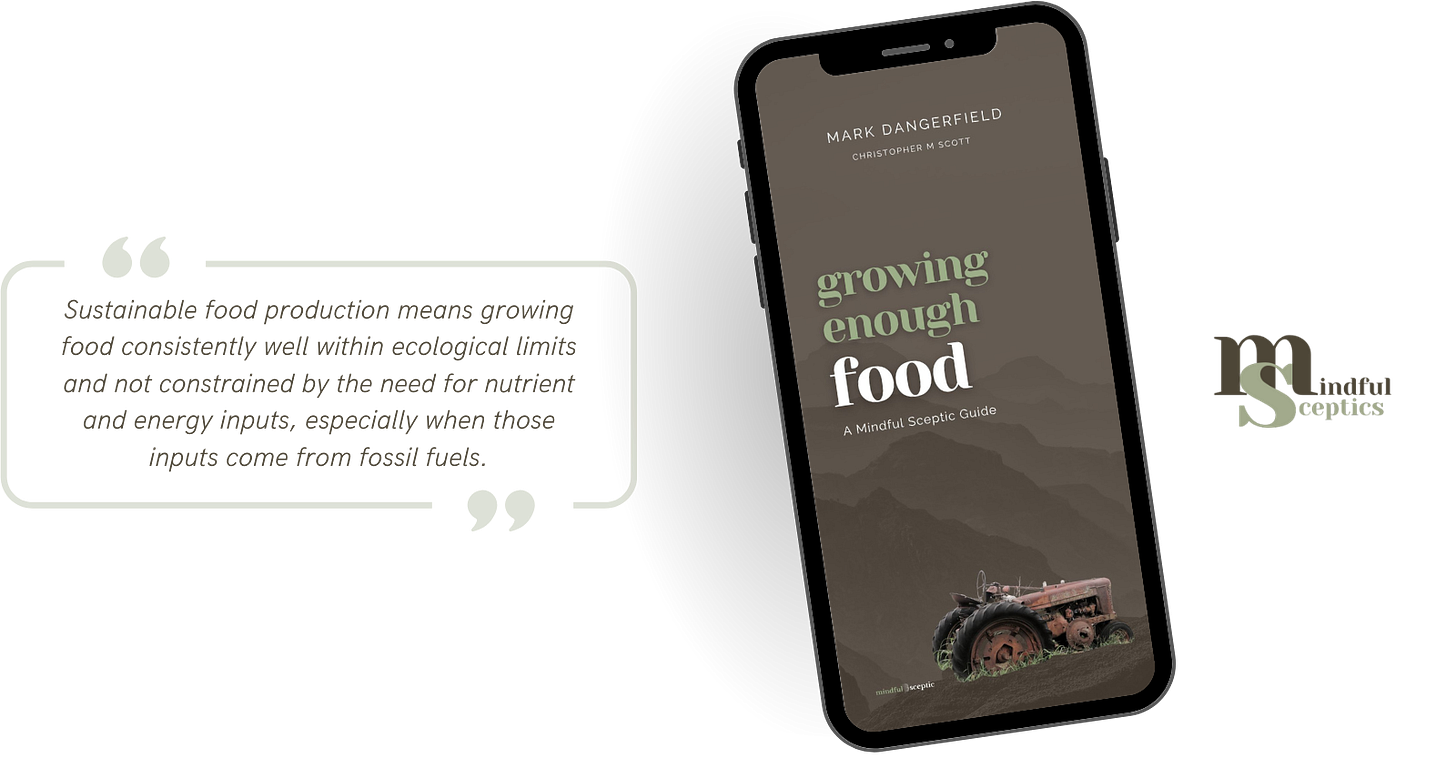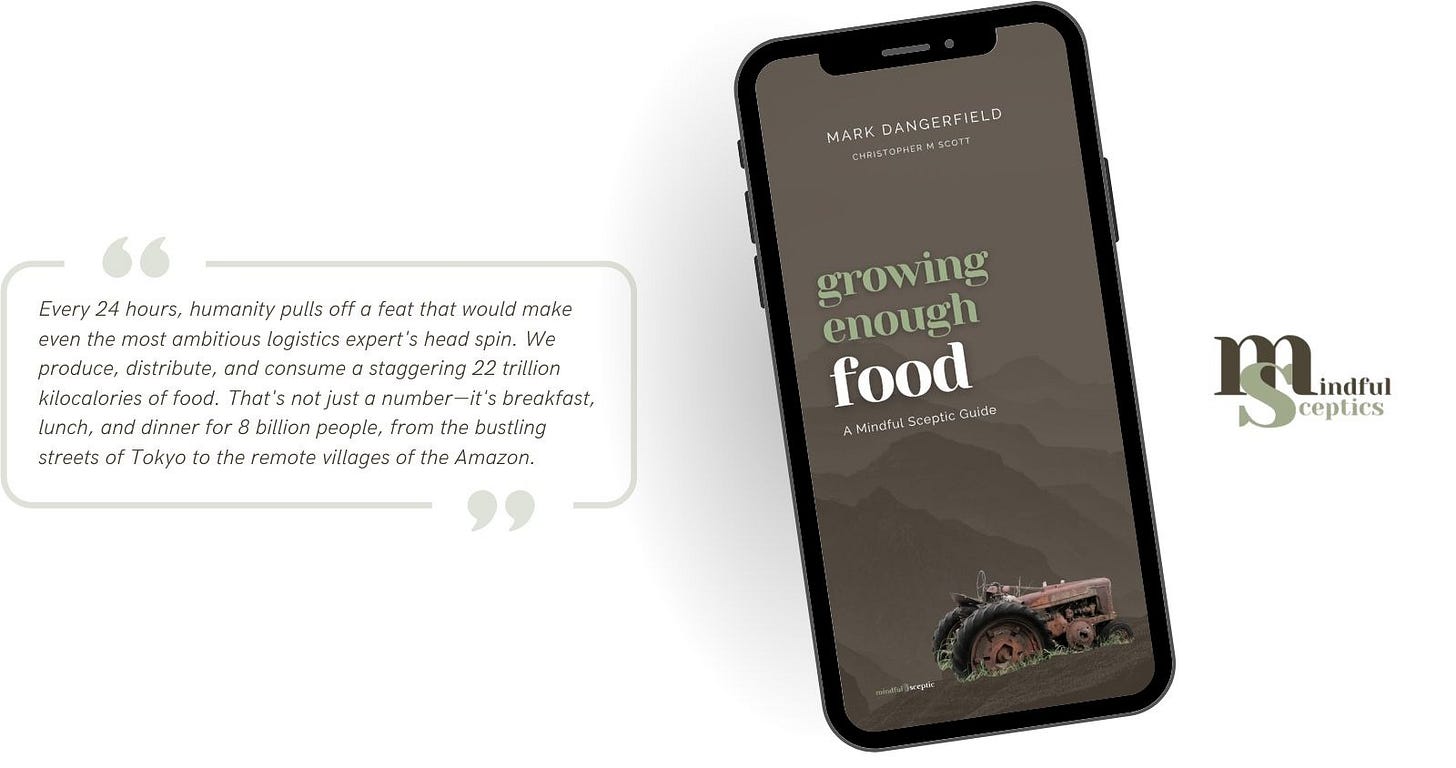Core Idea
The United Nations FAO presents “sustainable intensification” as the silver bullet for producing more food on existing farmland while protecting the environment.
It’s the darling phrase of policy makers, agricultural researchers, and development agencies because it promises infinite growth within finite limits.
The concept sounds reassuring, even necessary. After all, with the population of 8 billion people increasing by 8,000 per hour, we need more food. And with agricultural land already degraded across a third of global farmland, there is an urgent need for action.
But sustainable intensification contains a mathematical impossibility. You cannot simultaneously pour more energy and inputs into production systems and sustain the resource base that makes production possible.
It’s trying to fill a bucket while drilling holes in the bottom.
Counterpoint
The seductive narrative is that smart farming technologies, precision agriculture, and efficiency improvements will allow us to produce dramatically more food while using fewer inputs per unit of output. Vertical farms, sensors, satellite mapping, and genetically modified crops will deliver both intensification and sustainability.
And all this must happen because the UN’s own models suggest we need 70% more food production by 2050, achievable through closing “yield gaps” and optimising resource use.
This is where the oxymoron reveals itself with uncomfortable clarity.
Intensification, by definition, means adding external energy to agricultural systems. Modern intensive agriculture is an energy sink, not an energy source.
It requires fossil fuel-powered machinery, synthetic fertilisers from the Haber-Bosch process, pesticides, and complex supply chains. Every efficiency gain is a marginal improvement on a fundamentally unsustainable foundation.
You might be able to reduce energy use per kilogram of grain by 5% with slime clever tech, but you’re still mining soil carbon, depleting groundwater, and depending on finite fossil fuel inputs.
The problem with efficiency like this is that improvements in resource use per unit of output are always overwhelmed by increases in total production. This is Jevons’ paradox applied to agriculture. It is wise to never trust anything that comes out of economics, but this principle holds. Make farming more efficient by farming more intensively, which consumes more total resources. You can pat yourself on the back for being green, as the market rewards you and consumers thank you for cheap food.
The alternative is less attractive.
Genuinely sustainable agriculture is the kind that builds soil carbon, maintains biodiversity, and runs on renewable energy. And it is less productive, at least initially. Circular agriculture, where nutrients are recycled rather than imported, requires that 20-30% of production goes back into maintaining soil health. We need roughly 60% more global production to compensate for this productivity trade-off.
The uncomfortable truth is that sustainable intensification assumes we can engineer our way out of thermodynamics. It assumes technology can create energy rather than simply transfer it more efficiently. It assumes that markets optimised for profit will somehow deliver ecological integrity as a happy accident.
These assumptions are false.
Thought Challenge
Trace the energy flows… Pick any “sustainable intensification” technology, maybe precision agriculture, genetic modification, or vertical farming. Follow the energy inputs required to make them effective. There will be electricity, diesel, and petrol in the construction, operation and product distribution. Ask yourself if this system creates energy or simply redistributes it more efficiently. What would happen to this system if fossil fuel inputs became scarce or expensive?
Do the maths on efficiency… Research Jevons’ paradox and find one example of efficiency improvements in any resource-intensive industry. Track whether total resource consumption went up or down despite per-unit efficiency gains. Then ask yourself, if efficiency improvements historically increase total consumption, why would agricultural efficiency be different?
If you need a primer…
Understanding Jevons Paradox
Efficiency gains should lower resource consumption, but instead, we see a rebound, especially with energy. This is called the Jevon paradox. What can we learn from a Victorian gentleman who figured this out?
Closing Reflection
Sustainable intensification is a cognitive comfort blanket that allows development agencies to avoid the harder questions about population, consumption, and the mathematics of finite systems. It’s a way of appearing serious about sustainability while preserving the growth paradigm that created the problem in the first place.
The mindful sceptic sees through this contradiction. Obviously, we need to feed everyone well within planetary boundaries, but what would that actually require?
Not efficiency theatre, but a fundamental rethinking of how many people, consuming how much, can be supported by renewable biological systems.
Efficiency is necessary. But efficiency is not sustainability when the system itself is unsustainable. The sooner we admit that, the sooner we might find solutions that work within the laws of physics rather than against them.
Evidence Support
Lal, R. (2015). Restoring soil quality to mitigate soil degradation. Sustainability, 7(5), 5875-5895.
TL;DR… documents the extent of global soil degradation caused by intensive agricultural practices, highlighting the critical need for restoration of soil organic matter and nutrient cycling to maintain food production and ecosystem health. It reviews a range of management practices for improving soil quality, emphasising the role of organic matter restoration and reduced tillage.
Relevance to insight… a global synthesis illustrating how “energy-blind” intensification and disruption of carbon/nutrient cycles—driven by fossil fuel inputs—degrades the soil foundation of food production, directly supporting the insight that the agricultural energy sink is unsustainable and requires ecological solutions.
Foley, J. A., et al. (2011). Solutions for a cultivated planet. Nature, 478(7369), 337–342.
TL;DR… synthesises global data to show the unsustainable resource use, escalating greenhouse gas emissions, and biodiversity loss associated with intensified agriculture, and provides evidence-based pathways for reducing yield gaps, improving input efficiency, recycling, shifting dietary demand, and conserving ecosystems.
Relevance to insight… comprehensive evidence of how industrial agriculture transitioned into an energy-intensive “sink,” and systematically details both the consequences and practical solutions—including recycling and circularity—directly linking peer-reviewed data to the insight’s central arguments for reform.
Smil, V. (2008). Energy in nature and society: General energetics of complex systems. MIT Press.
TL;DR… analyses agricultural energy balances over centuries, demonstrating how historical transitions from solar-based, surplus-generating systems to industrial, fossil-fueled energy sinks threaten long-term food security, and charts empirical energy requirements across production, distribution, and consumption.
Relevance to insight… critically anchors the energy deficit thesis at the heart of the insight, detailing with quantitative rigour how agriculture’s energy ratio reversal underpins broader environmental and societal risks, while arguing for systemic re-balancing up to the planetary level.
Ponisio, L. C., et al. (2015). Diversification practices reduce yield gap between organic and conventional agriculture. Proceedings of the Royal Society B: Biological Sciences, 282(1799), 20141396.
TL;DR… meta-analysis shows that diversifying cropping systems and integrating ecological principles improves yield stability and resilience, reducing dependence on high external energy inputs characteristic of conventional farming and narrowing the yield gap with organic approaches.
Relevance to insight… provide quantitative peer-reviewed evidence that food production, which recycles nutrients and mimics ecological processes, can maintain productivity without intensive energy draw, directly supporting the practical dimension of circular/syntropic agriculture advocated in the insight.







